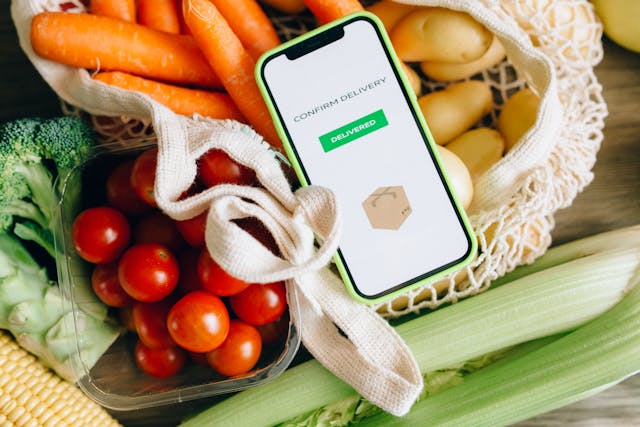
The convenience of having groceries delivered to your door sounds like a blessing.
This rings true, especially when people face mobility challenges or if it's too hot to go outside.
However, consumer advocacy group CHOICE just uncovered a costly truth that many Australians don't realise.
Australians shopping at Coles, Woolworths, and ALDI could be paying as much higher for groceries when buying through food delivery services.
Consumer advocacy group CHOICE revealed that using services like DoorDash, Uber Eats and MilkRun to get groceries from major supermarkets could see you paying far more than in-person shopping.
The issue isn't just about delivery fees, but it's about the sneaky price increases on items that many shoppers never notice.
The real cost of convenience
CHOICE analysed prices across a comparable list of 13 grocery products sold across supermarkets.
On average, items were priced 11 per cent higher via a third-party delivery service. Add delivery, service, and bag fees, and the overall bill can jump up to 39 per cent.
If you're spending $150 on groceries through a delivery app, you could be paying nearly $60 extra compared to shopping in-store.
'I expect to pay for delivery and service, but not extra for the items.'
Where are your extra dollars going?
The markup isn't just about convenience—it's a complex web of additional costs that quickly add up.
Individual item markups: Seven of 13 ALDI items cost more on DoorDash, while 12 of 13 Woolworths items were pricier on MilkRun.
Service and delivery fees: Delivery costs, which may include service fees, delivery fees and sometimes bag fees, range from $5 to as much as $11.32.
Eye-watering examples that hit home
Some of the price differences found by CHOICE are frankly shocking. Some items were up to 42 per cent more expensive.
A four-pack of Coles ice cream cones was $3.70 in-store. Meanwhile, on DoorDash, customers would pay $5.25 for the same item.
If you purchase a 400g tub of Lurpak in-store from Woolworths, it's $9. On the other hand, the same product bought on Uber Eats could cost customers $10.20.
Why seniors are particularly vulnerable
The grocery delivery business is projected to be worth more than $15 billion by 2025, and a significant proportion of Australians are utilising these services.
Statista research found 30 per cent of customers are opting for convenience at a significant cost.
For older Australians, this trend presents particular challenges. Many have adopted delivery services during the pandemic and continue to use them for various reasons.
However, the hidden costs can be particularly devastating for those on fixed incomes.
When delivery still makes sense
Despite the cost concerns, delivery services aren't inherently evil.
They serve an essential purpose, particularly for Australians who may find shopping challenging. The key is making informed decisions.
This CHOICE warning came at a time when grocery prices are already under intense scrutiny.
For the third straight quarter, Coles and Woolworths have shared equal top spot in a survey of Australia's most distrusted brands.
At the other end of public opinion, our most trusted brands remained rival supermarket chain ALDI and hardware giant Bunnings.
Ways to minimise the financial sting:
- Compare before you click: Check individual item prices against in-store prices before placing your order.
- Bundle smartly: If you must use delivery, make larger, less frequent orders to spread the fixed delivery costs across more items.
- Time it right: Some services offer reduced delivery fees during off-peak hours or for orders over specific amounts.
- Consider alternatives: Always compare delivery options to maximise savings. Click & Collect options are also available.
The grocery delivery markup issue highlights a broader challenge.
As we navigate this new landscape of grocery shopping, the message is clear: convenience comes at a cost, but it doesn't have to break the bank if you shop smart.
What's your experience LIKE with grocery delivery services? Have you noticed the price differences, or has this report opened your eyes to costs you weren't aware of? Share your thoughts and money-saving tips in the comments below.







